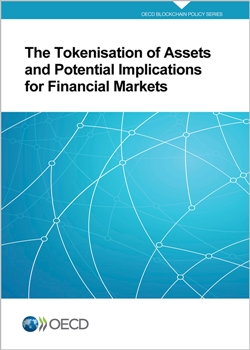Financial markets
The Tokenisation of Assets and Potential Implications for Financial Markets
|
Date of publication
This report is a contribution to the work of the OECD Blockchain Policy Centre and the OECD Going Digital project.
|
17 January 2020 - The tokenisation of assets involves the digital representation of real (physical) assets on distributed ledgers, or the issuance of traditional asset classes in tokenised form. Asset tokenisation has become one of the most prominent use-cases of distributed ledger technologies (DLTs) in financial markets, for assets including securities (e.g. stocks and bonds), commodities (e.g. gold) and other non-financial assets (e.g. real estate), and with potential cross-cutting implications for financial market practices and participants, market infrastructure and regulators across a large range of financial instruments and asset classes. This report:
Download the full report
Download the highlights
|
Related Documents
